
Space Battleship Yamato is a Japanese science fiction anime series written by Yoshinobu Nishizaki, directed by manga artist Leiji Matsumoto, and produced by Academy Productions. The series aired in Yomiuri TV from October 6, 1974 to March 30, 1975, totaling up to 26 episodes. It revolves around the character Susumu Kodai and an international crew from Earth, tasked during an interstellar war to go into space aboard the space warship Yamato, derived from the World War II battleship of the same name, in response to a message of aid from the planet Iscandar in order to retrieve a device which is able to reverse the radiation infecting Earth after being bombed by the Gamilas (Gamilons).
The Star Trek fictional universe contains a variety of weapons, ranging from missiles to melee. The Star Trek franchise consists mainly of several multi-season television shows and thirteen movies, as well as various video games and merchandise. Many aspects of the Star Trek universe impact modern popular culture, especially its fictitious terminology and the concept of weaponry on spacecraft. The franchise has had a widespread influence on its audiences from the late 20th to early 21st century. Notably, Star Trek's science fiction concepts have been studied by real scientists; NASA described it in relation to the real world as "entertaining combination of real science, imaginary science gathered from lots of earlier stories, and stuff the writers make up week-by-week to give each new episode novelty." For example, NASA noted that the Star Trek "phasers" were a fictional extrapolation of real-life lasers, and compared them to real-life microwave based weapons that have a stunning effect.

USS Voyager(NCC-74656) is the fictional Intrepid-class starship which is the primary setting of the science fiction television series Star Trek: Voyager. It is commanded by Captain Kathryn Janeway. Voyager was designed by Star Trek: Voyager production designer Richard D. James and illustrator Rick Sternbach. Most of the ship's on-screen appearances are computer-generated imagery (CGI), although models were also sometimes used. The ship's motto, as engraved on its dedication plaque, is a quote from the poem "Locksley Hall" by Alfred, Lord Tennyson: "For I dipt in to the future, far as human eye could see; Saw the vision of the world, and all the wonder that would be."
Battlefleet Gothic is a naval miniature wargame that was produced by Games Workshop from 1999 to 2013 with Andy Chambers as the primary developer. A spin-off of the science-fantasy setting of Warhammer 40,000, the game has players command fleets of large spaceships belonging to one of several spaceborne factions. Although the wargame's miniatures and rulebooks are no longer supported by Games Workshop, two video game adaptations have been made since its cancellation in 2013.

Vega Strike is a first-person space trading and combat simulator, developed for Microsoft Windows, Linux, FreeBSD and OS X systems. Many of the core game mechanics of Vega Strike are indirectly inspired by Elite. Other games, such as Wing Commander: Privateer, influenced the original developer.

Star Raiders II is a space combat simulator released in 1986 for Atari 8-bit computers as a sequel to 1979's Star Raiders, which was the killer app for the system. The game was originally developed as part of a tie-in with the movie The Last Starfighter, which featured an arcade game of the same name as part of its plotline. Versions for the Atari 5200 and the Atari 8-bit computers were developed in 1984, although those were never released. Later the tie-in was dropped, and the game converted into a sequel to Star Raiders by changing a number of gameplay elements. The gameplay remained different from the original Star Raiders.
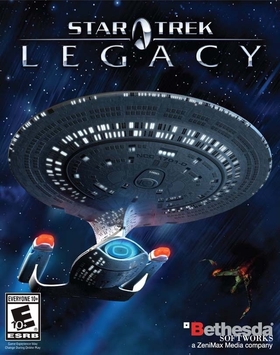
Star Trek: Legacy is a 2006 real-time tactics space combat video game for Microsoft Windows and Xbox 360 developed by Mad Doc Software and published by Bethesda Softworks in association with CBS Paramount Television and CBS Consumer Products. Originally slated for release in the fall of 2006 to coincide with the 40th anniversary of Star Trek, the Windows version was not released in North America until December 5, 2006, and the Xbox 360 version until December 15. In Europe, both the PC version and the Xbox 360 version were released on December 22, 2006.
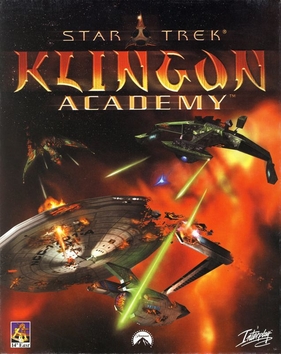
Star Trek: Klingon Academy is a space flight simulator video game developed by 14 Degrees East, an internal development house of publisher Interplay Entertainment. The game follows a young Klingon warrior named Torlek as he attends the Elite Command Academy, a war college created by General Chang to prepare warriors for a future conflict with the United Federation of Planets. Christopher Plummer and David Warner reprised their respective roles as Chang and Gorkon for the production of Klingon Academy.

Star Trek: Encounters is a video game set in the Star Trek fictional universe, which was released in 2006 for the PlayStation 2. The game was developed by Scottish studio 4J Studios for Bethesda Softworks and Ubisoft (EU).

Star Command: Revolution is a real-time strategy game developed by Metropolis Digital, Inc. and published by GT Interactive. It was originally released in 1997 for MS-DOS, and was re-released in 1998 for Microsoft Windows under the title Star Command Deluxe. This re-release was overshadowed by its contemporary, Starcraft. A sequel, Star Command X: Armada, is hinted at upon successful completion of the campaign mode, but it was never produced. Instead, the developer released the similarly named but unrelated game Armada on November 26, 1999.

Star Wars: TIE Fighter is a 1994 Star Wars space flight simulator and space combat video game, a sequel in the Star Wars: X-Wing series. It places the player in the role of an Imperial starfighter pilot during events that occur between The Empire Strikes Back and Return of the Jedi.
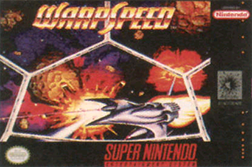
WarpSpeed is a space flight simulator video game created by Accolade for the Sega Genesis/Mega Drive and Super NES.
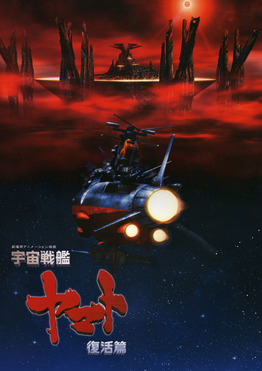
Space Battleship Yamato: Resurrection is a 2009 Japanese animated science fiction action film, and the first part of a planned series of films which are the latest addition to the Space Battleship Yamato saga. Resurrection is set in the year 2220, 21 years after the first Yamato story and 17 years after the story of the last film, Final Yamato. A wandering black hole is approaching the Solar System, and will surely destroy all life on Earth. The decision has been made to evacuate Earth's entire population. The planet to which Earth's population is being moved is called Amare, ruled by Queen Iriya, some 27,000 light years away in the Sairam star system. When the film opens, that task is already under way. The Yamato had been destroyed in 2203.

Star Trek: Voyager – Elite Force is a first-person shooter video game developed by Raven Software and published by Activision. The game was originally released on September 15, 2000 for Windows and Mac OS. A port for Mac OS developed by Westlake Interactive and published by Aspyr Media was released on November 20, 2002. Elite Force was ported to the PlayStation 2 by Pipe Dream Interactive and published by Majesco Entertainment on December 11, 2001.

Star Trek: The Rebel Universe is an action-adventure computer game published by Firebird Software in Europe and Simon & Schuster Interactive in America. It was originally released for the Atari ST in 1987 and was followed the next year with versions for the Commodore 64 and DOS.
Space Pirates and Zombies (S.P.A.Z.) is a real-time strategy video game released on August 15, 2011, on the Steam distribution platform. with a top-down perspective based around space combat. The game was developed by a two-man team under the studio MinMax Games using the Torque engine. The game was later ported for Mac OS X and Linux systems.

Artemis: Spaceship Bridge Simulator is a multiplayer co-operative spaceship simulation game created by Thomas Robertson for Windows, iOS, and Android devices. The game is designed to be played between three and eight players over a local area network, with each player using a separate computer that provides a different spaceship bridge station, such as helm control or engineering.
Starfall Online is an MMO real-time strategy video game with wargame elements, that mixes intense tactical combat with in-depth spaceship customization. The project is developed by independent Russian company Snowforged Entertainment.
Dark Star is a 1984 ZX Spectrum shoot 'em up developed and published by Design Design. It was later ported to other home computer platforms including the Amstrad CPC, TRS-80 Color Computer, and Dragon 32/64 in 1985.
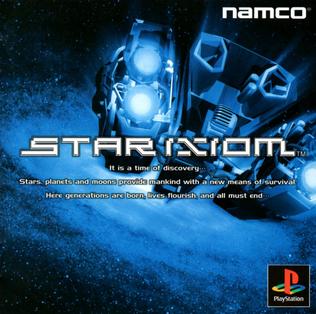
Star Ixiom is a 3D space combat simulator video game developed and released by Namco in 1999 for the PlayStation. It is the sequel to the 1985 Family Computer game Star Luster, which was Namco's first original game for home consoles. In the game, the player controls one of seven ships in their mission to wipe out an alien race threatening the galaxy. Gameplay revolves around clearing missions to progress further, such as destroying a certain fleet of enemies or protecting a space station from enemy fire.












